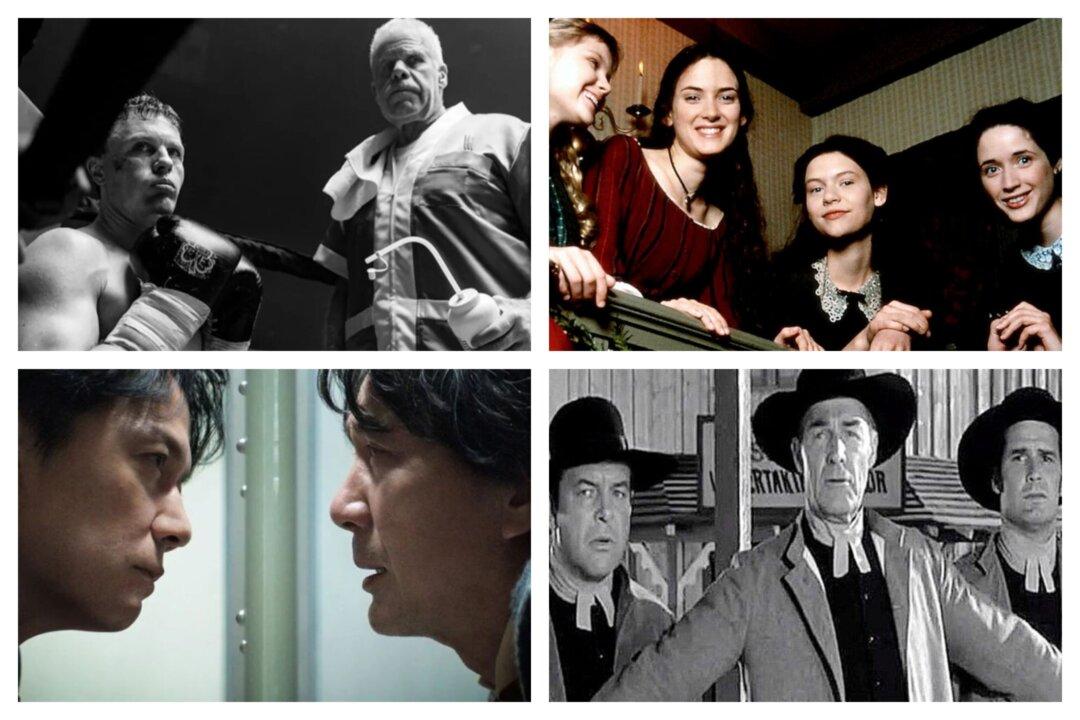Not Rated | 1h 46min| Biography, Drama | 28 July 1962 (USA)
The 1962 production of “The Miracle Worker” is based on an autobiographical work by Helen Keller that she wrote in 1902, titled “The Story of My Life.” This cinematic version is itself the re-creation of a Broadway play that debuted in 1959 (also titled “The Miracle Worker”), which was penned by screenwriter William Gibson.
Directed by Arthur Penn, the film certainly opens on a dramatic note. New parents Captain Arthur Keller (Victor Jory) and his wife, Kate (Inga Swenson), are tending to their newborn daughter, Helen, who is ill. Things go from bad to worse for the baby, as her severe illness has rendered her both blind and deaf. Kate lets out a blood-curdling scream when she first realizes this horrifying fact, in a gruelingly long camera take.
At 7 years old, Helen (Patty Duke) is spoiled by her parents and older brother, James (Andrew Prine), as they try to deal with the enormous stress due to her condition. For instance, in one scene, Helen walks around the dinner table, and while her family members chat, she grabs food from their plates and stuffs her mouth with it.
Battles of Will
Things get off to a rocky start when the Kellers’ more genteel Southern ways brush up against Annie, who is a strong-headed young woman with pragmatic sensibilities. And things don’t let up from there; the Captain and Annie increasingly butt heads as wife Kate plays a more neutral role between the two. When Helen makes little progress, the Captain suggests to his wife that they fire Annie.
Meanwhile, attempting to teach Helen has become increasingly difficult for Annie to handle. Like most children her age, Helen is starting to rebel. This is compounded by her inability to effectively communicate, which in turn makes her lash out, sometimes violently. The only thing that brings a smile to Helen’s face is her little doll.

As things get more challenging and relations between Annie and Helen’s parents become increasingly strained, the parents discuss sending Helen away to an asylum. That thought is quickly put to rest after Annie reveals that she spent part of her youth in an asylum, and breaks down how horrible it was for her.
The Kellers decide to keep Annie on, at least for a little while longer. But Annie has some rules of her own for the family to follow; if she’s going to continue helping Helen, her family are to stop doting on her and let Annie take full charge. The Captain is taken aback by Annie’s fierce determination, but she convinces him to arrange for separate lodgings for both Helen and herself so that she can more effectively instruct the child.
The rest of the film is centered on Helen’s initial resentment of Annie, resulting in a battle of wills, and the latter’s indefatigable patience in trying to reach her. Annie’s kind stubbornness—her tough love—eventually leads to some breakthroughs that are both tear-inducing and exhilarating.

The message that the film makes is that simple acts of kindness, strict discipline, and a herculean amount of grit can sometimes be all that it takes to affect others in positive ways.
Beautifully shot and ably helmed by Penn, “The Miracle Worker” is also helped along by its two main actresses, Bancroft and Duke (relative no-names in the film industry at the time), who were completely immersed in their roles as the struggling yet determined teacher and her impaired student, respectively. In lesser hands, the roles could have easily been overacted and come off as smarmy and needlessly sentimental. The two have such organic chemistry together that they light up the screen whenever they’re on it.

This is a supremely positive piece of cinema that is not only deeply moving and emotionally stirring, it’s also not too self-important or preachy.






